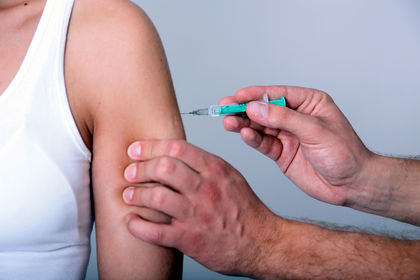Typhus

Typhus (TI-fus) is a group of infections caused by bacteria called rickettsiae that are spread by parasites such as lice that live on people or on other warm-blooded animals such as rats and mice.
KEYWORDS
for searching the Internet and other reference sources
Endemic typhus
Lice
Murine typhus
Scrub typhus
Rickeltsial diseases
War, Famine, and Typhus
Throughout history, war and famine have brought outbreaks of typhus, a group of infections spread by parasites that live on people or animals such as rats and mice. During World War II, typhus spread through Europe, North Africa, and the Pacific Islands, and it killed thousands of prisoners in German concentration camps. Epidemic typhus still can be a serious threat in parts of the world where a breakdown in society or a natural calamity such as an earthquake leads to unhealthy living conditions.
Typhus Epidemics
It is likely that typhus existed in ancient history, although the first clear historical description of typhus comes from the eleventh century, when an outbreak took place in a monastery in Sicily. Typhus reached epidemic proportions in 1489, during a siege in Granada. Typhus then spread throughout Europe.
Typhus also was present in the Americas, although there is some controversy as to whether Spanish explorers brought the disease in the sixteenth century, or whether the disease already was present in Aztec and other pre-Columbian societies.
In the early nineteenth century, typhus increased dramatically in Europe. In the twentieth century, typhus spread through Europe, North Africa, and the Pacific Islands, killing thousands of prisoners in German concentration camps.
What Is Typhus?
Typhus is a group of infections caused by rickettsiae, a group of unusual bacteria. Rickettsiae are like other bacteria in that they can be killed by antibiotics. They are also like viruses, however, in that they must invade living cells in order to grow. There are three main types of typhus: epidemic, murine, and scrub.
- Epidemic typhus, caused by Rickettsia prowazekii, is a severe form of the disease spread by human body lice. In the United States, this type of typhus also occasionally is spread by lice and fleas on flying squirrels. Sometimes the symptoms of people with typhus become active again years after the original attack; this is called Brill-Zinsser disease. Brill-Zinsser disease is milder than epidemic typhus.
- Murine typhus, caused by Rickettsia typhi, is a milder form of the disease and is spread by fleas on rats, mice, and other rodents.
- Scrub typhus, caused by Rickettsia tsutsugamushi, is a form of the disease found in the Asian-Pacific area bounded by Japan, Australia, and the Indian subcontinent. It is spread by mites on rats, field mice, and other rodents.
Who Gets Typhus?
Both epidemic and murine typhus are found around the world. However, epidemic typhus is most common in situations where poor hygiene and crowded living conditions exist. Epidemic typhus is rare in the United States. Murine typhus is most common in rat-infested areas. It is the only type of typhus that occurs regularly in the United States, but fewer than 100 cases a year are reported, mainly in Texas and California.
What Happens When People Have Typhus?
Symptoms
The symptoms of typhus include fever, headache, chills, and general aches that are followed by a rash. The rash spreads to most of the body but usually does not affect the face, palms of the hands, or soles of the feet. In murine typhus, the symptoms are similar but milder. In epidemic and scrub typhus, the fever may rise as high as 104 to 105 degrees Fahrenheit and stay high for about two weeks. The headache is intense.
In severe cases of typhus, blood pressure may drop dangerously. Severe illness also may lead to confusion, seizures, coma, or even death. This accounts for the disease's name, which comes from the Greek word "typhos," meaning smoke, a cloud, or a stupor arising from a fever.
Diagnosis and Treatment
Blood tests are used to show if people are infected with typhus rickettsiae. People with typhus who are treated with antibiotics generally recover. If treatment is begun early, they usually get better quickly. If treatment is delayed, however, the improvement usually is slower, and the fever lasts longer. If left untreated, typhus can damage organs, lead to coma, and even to death.
Prevention
Prevention of typhus is based on avoiding the unsanitary conditions in which it spreads. It is always wise to steer clear of animals such as rats and mice that may carry disease. Travelers to areas where typhus is common should be especially cautious. To prevent the spread of typhus, body lice must be destroyed by removing them from people with the disease and by boiling or steaming their clothes.
Resource
U.S. Centers for Disease Control and Prevention (CDC), 1600 Clifton Road
N.E., Atlanta, GA 30333. The website for this government agency has
information about typhus and other rickettsial infections.
Telephone 800-311-3435
http://www.cdc.gov
Comment about this article, ask questions, or add new information about this topic: